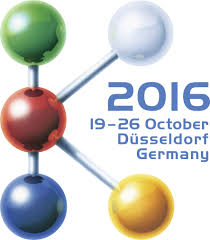
Trends shaping the North American plastics industry include growing use of advanced digital design and manufacturing software and increased automation of production. Recent developments give companies throughout the product chain more ways to optimize operations, speed products to market and increase competitiveness.
Software has long played a role in product and mold design, and automation has always been a way to increase production efficiency. What is different now is that more design software incorporates high-tech features such as 3-D simulation and analysis and even virtual reality imaging. These capabilities help users develop and rapidly fine-tune the manufacturability of parts and molds before money is spent cutting steel.
In automation, the trend is primarily one of molders adding increasingly affordable robots to their lines. For years robots were large, fast, specialized systems that were costly to acquire and required expertise to program. In what can be called a “democratization of automation,” the cost of many robots has been declining, making them ever more affordable. Programming is also simpler – in many cases it can be done with a smart phone or tablet computer. And in one advance, “collaborative robots” have been developed that are safe enough to work alongside humans and simple to program.
A number of factors influence the gains in design software and robotics. One is the digital revolution that promotes the connectivity of machines and data throughout a factory. Another is the growth of advanced materials that may combine counterintuitive properties like high strength and light weight. Since unconventional designs are often required to realize the potential of these materials, engineers need software that allows them to develop innovative shapes.
Rethinking Design
Examples of suppliers that pursue advanced digital design and manufacturing capabilities include Siemens, whose NX PLM Software provides multiple features and program offerings. NX software is a platform to which designers, molders and toolmakers add on integrated software for applications throughout product development.
Among the programs are design capabilities with 3-D simulations; software that calculates warping, cooling, shrinkage and deformation in tooling design; manufacturing software for mold development; costing tools; NC software for machines; CAM software for production; and quality control software.
Siemens says that NX software reduces design time an average 30%. Paul Brown, senior marketing director for the NX Product Engineering Unit, says that software integration lets users move seamlessly from concept to design qualification, mold development, and machine production. The efficiencies and cost savings in moldmaking especially can make companies more competitive with offshore mold sources.
Design and Mold Simulations
Another vendor of advanced software is Dassault Systémes. Through 3-D simulation programs such as Catia, materials software like Solidworks, and Delmia, a “digital twin” program for building production lines, Dassault provides integrated capabilities that reduce product development time – 20 to 50% in the case of Solidworks, says Lotfi Derbal, senior product portfolio manager.
Solidworks allows simulation so designs can be optimized before investments are made in molds and manufacturing. In mold development, Derbal says engineers can trial cooling channels, balance components, check flow and assess part quality.
Catia supplies 3-D simulation programs that are process oriented, says Fabrice Agnes, engineering portfolio management director. These include Plastic Mechanical Designer, which allows rapid iterations of designs, compensates for features such as grills, ribs, reinforcements and bosses, and shows how changes affect filling, flow and other operations. Another application, Mold and Tooling Designer, allows experimentation with inserts, ejectors, cooling systems, parting lines, parting surfaces and other mold features.
A recent development, which could be displayed at K2016 – the World’s No. 1 Trade Fair for Plastics and Rubber – is Functional Generative Designer, software that allows optimization of the cooling system of a mold, whether it is made by conventional machining or by additive manufacturing (3-D printing), to improve part production and properties.
Friendly Robots
Most robots are fast, repeatable and consistent. They also operate away from personnel for safety. “A robust robot that is able to move fast is not suitable to work beside humans,” says Sonny Morneault, U.S. national sales manager of Wittmann Battenfeld, which sells robots and primary equipment like injection presses. Morneault sees growing demand for robots, mostly machine-side systems that place inserts in molds, label parts and perform high-speed part removal.
There is also a trend toward collaborative robots – lightweight platforms for assembly, loading and unloading, and packaging, which interact safely with humans. A few companies make them. One is Rethink Robotics with two models, Baxter and Sawyer. They are low cost, lightweight, and are programmed by teaching them arm movements and pressing an “enter” button on a pendant. Baxter has two arms, 7 degrees of freedom. Sawyer has one arm with 7 degrees of freedom. Each lifts up to 4 kg.
Workers wheel the robots around a plant. Features include: location recognition and automatic set-up for jobs; spring-powered actuators for force control; arm sensors that measure spring deflection during motion and adjust the arm motor to compensate for it; and self-programming. They also have sensors that detect if a worker comes too close; if so, the robots stop operation. The company says the return on investment with the robots is usually only months.
Conventional robots are becoming more versatile. One area cited by Morneault is in the collection and transmission of production data. He notes, however, that few customers use this technology, and then only for internal use.
Advances in design software and robotics offer just a snapshot of the activity underway in the North American plastics industry. Yet the impact they are having and the potential they create for developments such as the Factory of the Future and other productivity-enhancing trends is considerable. These capabilities, which will be on display at K 2016, could well lay the foundation for greater levels of productivity and economy the industry will continue to require.
K 2016 will take place from October 19 – 26, 2016 at the fairgrounds in Düsseldorf; Germany.
K 2016 information is available at:
Facebook:www.facebook.com/K.Tradefair?fref=ts
Twitter: https://twitter.com/K_tradefair














More Stories
Automechanika Shanghai 2024
A successful and promising fresh start for the Geneva International Motor Show 2024
Vega’s Innovative Transportation Solutions: Revolutionizing the Logistics Industry